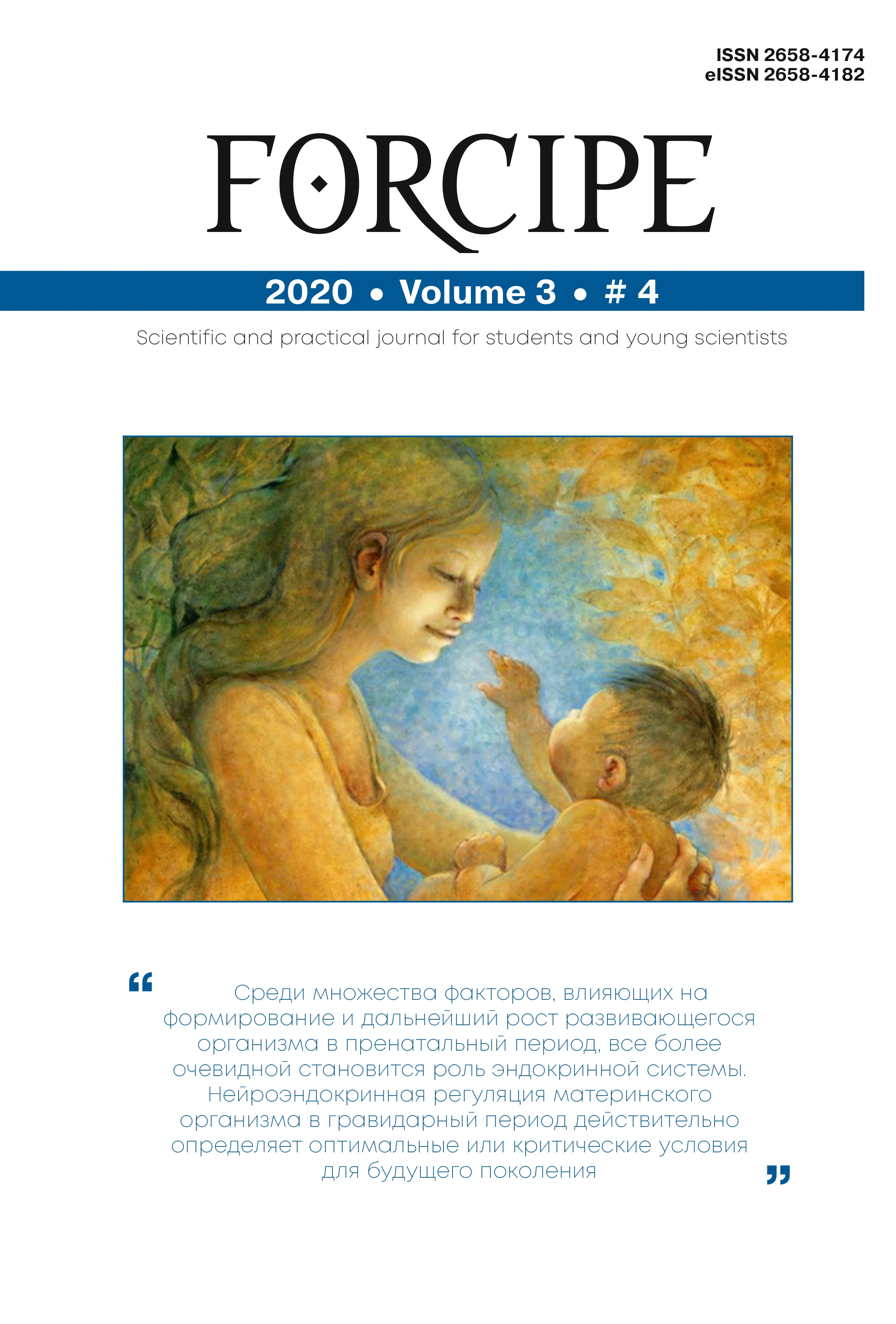AGE RELATED MORPHOFUNCTIONAL CHANGES IN THE PREFRONTAL CORTEX OF THE BRAIN IN CHILDREN AND ADOLESCENTS
Abstract
The goal is to study the structural transformations of the pyramidal neurons and fibroarchitectonics of the human prefrontal cortex from birth to 21 years. Materials and methods. The material comprised 109 cerebral hemispheres (94 male, 15 female) people from birth to 21 years old who died without brain injuries. Pieces were cut in fields 44, 45, 8, 10, and 32/10 of the prefrontal cortex, fixed in 10 % neutral formalin, and embedded in paraffin. Sections 10 μm thick were stained with Nissl, Einarson and Peters methods. Sections of 100 μm thick celloidin were impregnated with silver nitrate using the Golgi method. We used the method of computer morphometry to measure the area of profile fields of pyramidal neurons (Pn) in the III3 and V1 sublayers of the cortex, and the thickness of the bundles of radial fibers (Thf) in the V1 sublayer. We calculated the mean, error of the mean, confidence interval with a significance level of P ≥ 95 % (p < 0.05). The significance of the differences between the means was determined using the t test (Student’s test). Results. By 12 months, Pn in speech motor fields increased by 2.3-2.6 times, in fields 10 and 32/10 - by 2.0-3.1, in field 8 - by 1.7-2.4, and Thf by 1.1-1.4 times compared with newborns. By the age of 3, Pn increased in fields 44 and 45 at 3.6-4.6 times, in fields 10 and 32/10 - at 3.6-3.8, in field 8 - at 1.9-2.5 times compared with newborns, the complex of vertical intracortical connections was more complicated. From 4 to 7 years old, the number of neurons of medium and large size (more than 150 μm2) increased. By the age of 9, Pn in fields 10 and 32/10 increased by 1.3-1.4 times compared with 5-6 years. In adolescents and young men, Pn of the largest cell classes (more than 220 μm2) were detected, Thf variability increased, and intracortical horizontal connections became even more complex. Conclusion. Significant microstructural transformations in the studied fields are observed in the first year of life, as well as by 3, 5-6, 9-10, 14 and 17-18 years. In terms of pace and timing, they correspond to the main age stages in the formation of higher regulatory mechanisms of brain activity involving the human prefrontal cortex.



